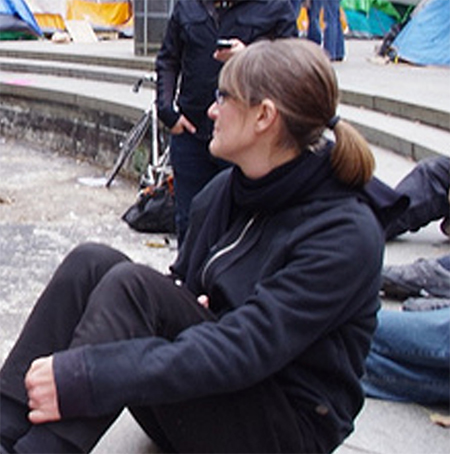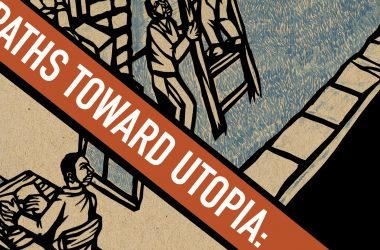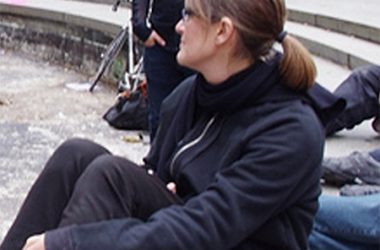
One could almost assert that “anarchism is everywhere” in Vienna, at least in terms of how it looks on the streets from the plentiful modern-day ornamentation created with spray paint, sharpies, stencils, and stickers. It’s probably just the work of a handful of anarchists, autonomists, and/or antifa folks. Yet antiauthoritarian politics, or at least its agitprop, was a prominent part of the visual “public” landscape during my two weeks of long, random walks through various Vienna districts. And in an age when big-budget and near-monopolistic advertising firms and mainstream media usually capture all civic space, and thus our imaginations — and against the backdrop of a place where the lived experience of the terror of world wars, anti-Semitism, and fascism is now concretized in, say, monuments — the fact that even a few people can make it seem like anarchist politics are a widespread force and viable alternative is pretty powerful. Many of the slogans that anarchists toss out in places like, for instance, the United States, certainly have much more resonance within a European city that did its part in the time of National Socialism, and might do more to actually influence minds and hearts in light of that legacy.

Capitalism, more and more, shapes culture, with us as its increasingly voluntary artist(ic) participants, in turn shaping a culture that seems to encompass the whole of what’s possible. The social relations molded by this culture of capitalism alas appear (but only appear) increasingly utopian, especially in contrast to the increasingly dystopic reality most of humanity lives within. That resistance and especially a different future (or in the case of one street artist’s vision, “no future”) can be read across the city may thus have more tangible meaning toward enacting a culture of the commons than in the past, or at a minimum, is one of the few spaces left (where it is left, since in many cities, even this type of communication is silenced) that can help to create dialogues and/or be in dialogue with what’s seen as the status quo or “natural.”

Some of the images posted in “Red and Black Vienna” (http://redblackvienna.tumblr.com/) may not have been created by anarchists and like-minded comrades, or may not be anarchistic per se. I’m reading that into certain pieces of this street art, which is part of my point in sharing them — that they can be read that way. Of course, reading certain ones of them involves being able to read German, the language of Vienna. But as is clear from a glimpse, a fair share of this street art is in English. On the one hand, that could be seen as a product of domination, with the English language, through the geopower of the United States and capitalism, imposing itself across the world’s peoples, “even” anarchists and autonomists. But I’m choosing to mostly view it as illustrative of how people share concerns across languages and cultures, as in “ACAB” everywhere. That we can recognize a common humanity in this inhumane global society, even if only against similar structural enemies, is a sort of win at this historical juncture, and a part of why we can see ourselves and each other in all the self-organized occupations, whether of (allegedly) public squares and parks or city walls. Yet another perspective is: this is a good opportunity to learn some (radical) German.
Text: Cindy Milstein; for more writing, see cbmilstein.wordpress.com
Photos: Cindy Milstein, June 16-27, 2013, Vienna





